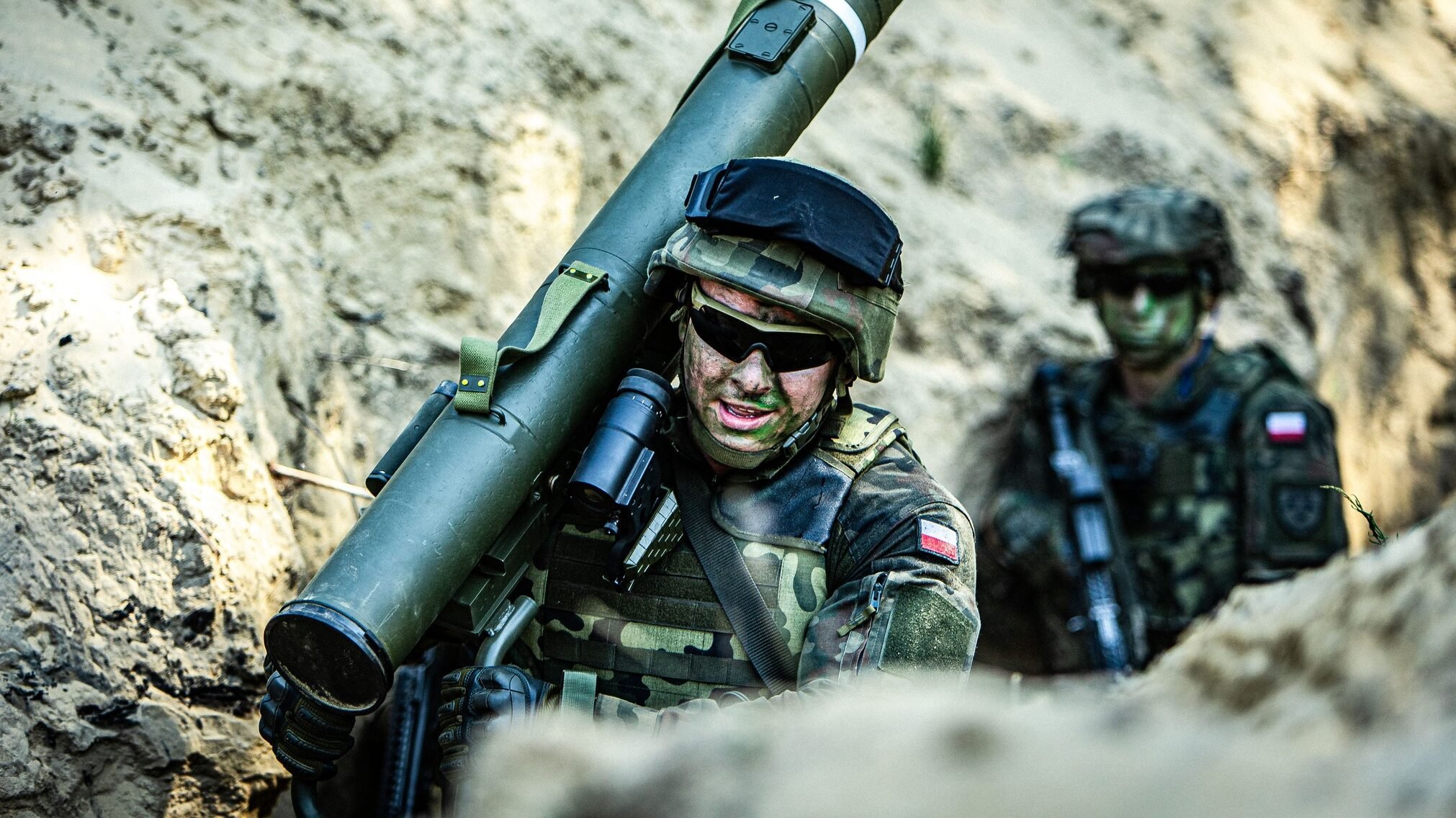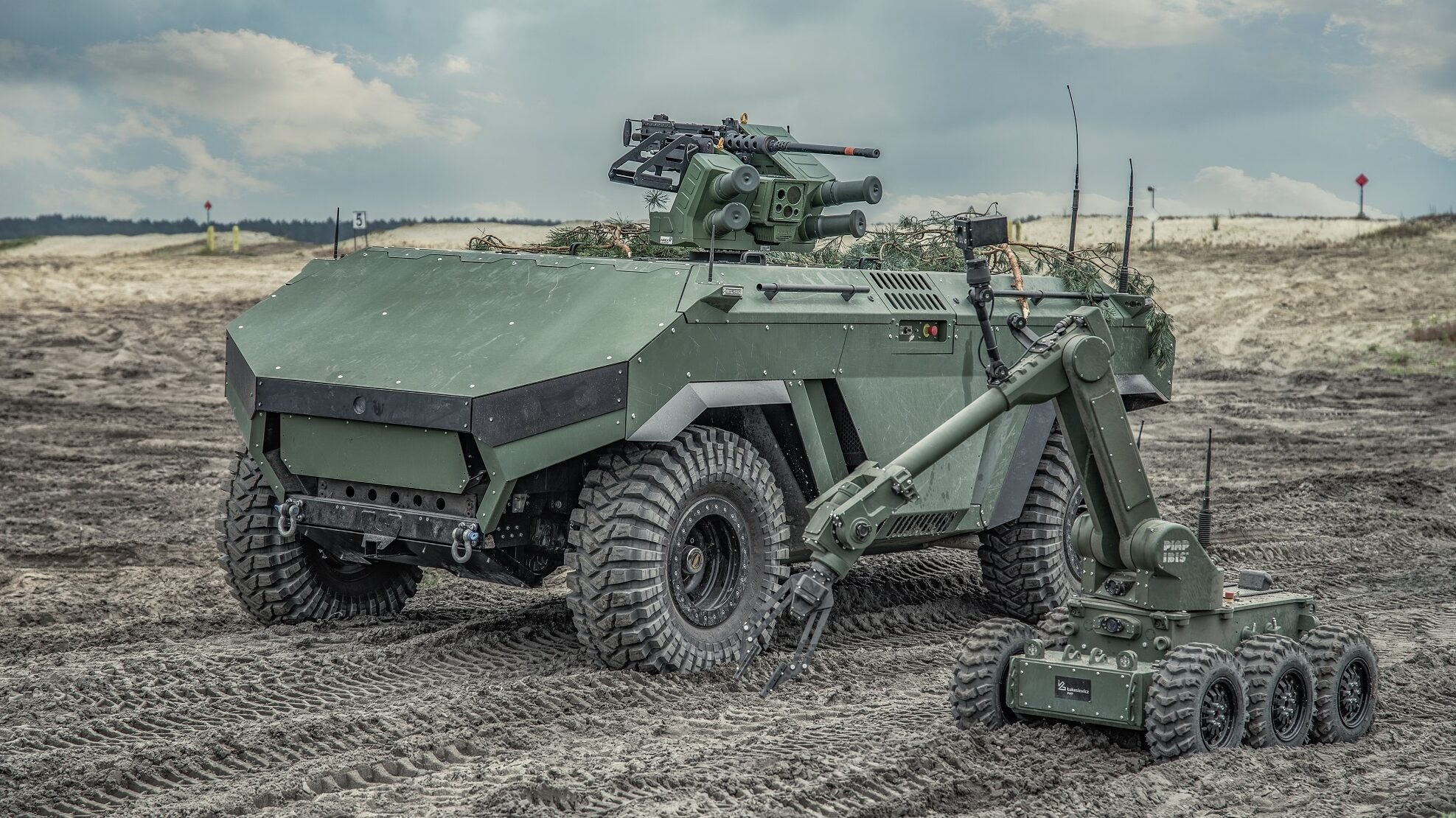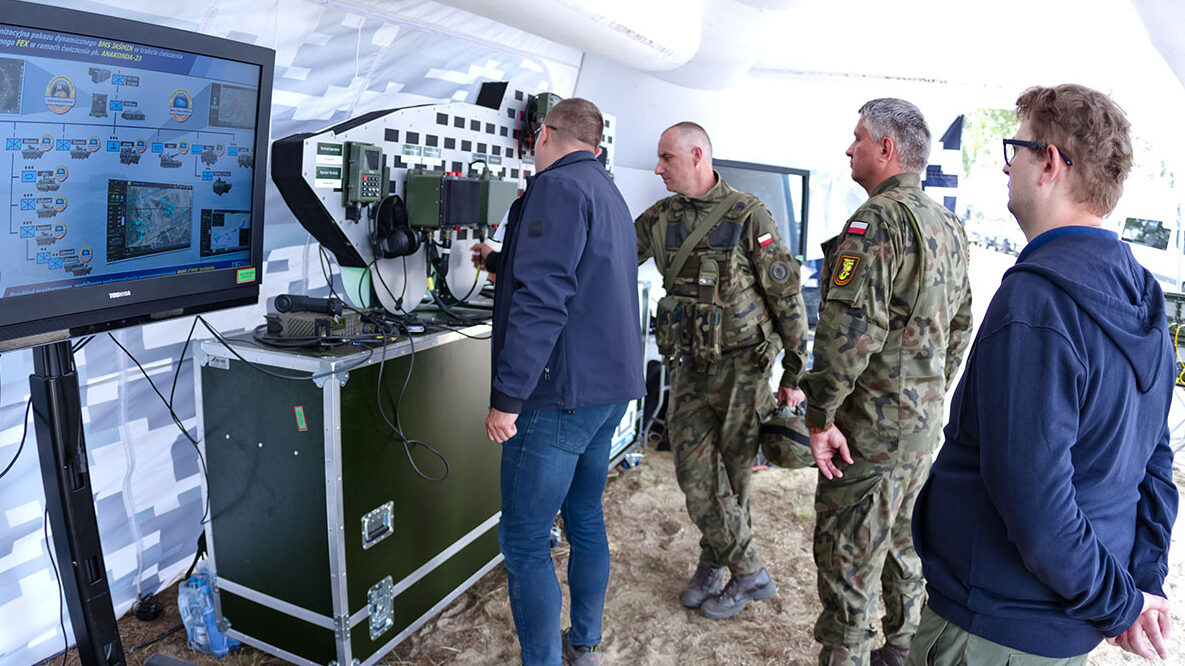
In Summer 2023 Poland carried out the Broken Acacia exercise. (Polish defense ministry)
WARSAW — Poland has been growing its military and investing heavily in new systems at an unprecedented rate since the start of the Ukraine invasion. Among the splashy orders were Abrams tanks, Apache combat helicopters and HIMARS rocket launchers from the United States, South Korean-made K2 tanks, Chunmoo rocket launchers, K9 self-propelled howitzers and FA-50 combat aircraft, and at least two Swedish early warning aircraft to complement additional tethered warning systems.
All told, this year Warsaw has spent 3.9 percent of gross domestic product for defense, almost twice NATO’s current 2 percent target. And while much of the new technology is still in the procurement phase, Poland is striving to reorganize its military in order to meet the growth of both personnel and equipment.
Which is why this year’s Anakonda 23 exercise is viewed as critical for figuring out what may work or not work for a future Polish military — and why the ninth annual version of the Anakonda exercise included, for the first time, a Field Experimentation Exercise (FEX) for new capabilities.
During the FEX, held in mid-June, soldiers from the 21st Podhale Rifle Brigade, 20th Bartoszyce Mechanized Brigade and 17th Wielkopolska Mechanized Brigade tested the new organizational model of combat subunits (Future Task Force), upcoming land and air platforms in various configurations as well as modern and breakthrough technologies developed on the basis of lessons learned from the war in Ukraine. Another key assumption of FEX was to define the requirements that both communication systems and combat platforms must meet.
FEX also served as a meeting point for dialogue between military commanders and suppliers of the most modern, often futuristic, solutions for the army. Dozens of Poland’s defense companies brought their pitches for breakthrough solutions and emerging and disruptive technologies, with many presenting real capabilities of the equipment in the field.
“The FEX is a window for new technologies,” said Commander of the Operational Command of the Polish Armed Forces Lt. Gen. Tomasz Piotrowski. “We need to consider how to optimize and combine relatively small formations operating on land and provide them with reconnaissance capabilities adapted to Polish needs. In this experimental exercise, we are focused on figuring out what this future task force should look like and how to make it capable of striking pre-detected targets.”
Enter the HUNTeR
During the exercise the first Polish HUNTeR unmanned combat ground vehicle (UCGV), developed by the Łukasiewicz Research Network – Industrial Institute for Automation and Measurements (PIAP) made its debut in difficult training ground conditions.
The HUNTeR UGV was designed for a number of applications, such as protection of selected areas, monitoring of the country’s border, patrolling and reconnaissance and troop support. The variant at FEX was the reconnaissance version, which comes with cross-country traverse and obstacle avoidance capabilities and the ability to conduct operations in autonomous or semi-autonomous modes. The vehicle can move along on a pre-determined path, using a radio communication system and a number of sensors, including 9 HD cameras (a pan, tilt, zoom camera, four hull-mounted navigation cameras and four drive assistant cameras, as well as a GPS receiver and two lidars). It is capable of adjusting to avoid various obstacles along the route.
Don’t think of this as a small unmanned vehicle: this robot weighs over four tons and is nearly five meters long. It has a hybrid drive, which includes a power generator and traction electric motors. The power supply system allows the UCGV to work for a long time, and it also enables noiseless movement in purely electric mode. HUNTeR reaches a maximum speed of over 50 km/h, per the company.

During the 2023 FEX in Poland, the HUNTeR UCGV, armed with a ZMU-03 RCWS, operated in tandem with an IBIS pyrotechnical robot. (Anna Jurczak – Łukasiewicz-ŁIT)
The HUNTeR tested during the FEX was armed with a Polish AREX (a WB Group company) designed ZMU-03 RCWS with 12.7mm machine gun and smoke grenade launchers. Optionally, the RCWS can also be equipped with a small unmanned aerial vehicle, such as the X-FRONTER VTOL quadrotor, designed for both surveillance and combat missions and could be operated by troops on the field, or remotely as a part of an automated detection system.
During the FEX, HUNTeR was presented in tandem with a 320-kg PIAP IBIS six-wheeled robot, intended for pyrotechnical actions and for reconnaissance, capable of speeds up to 10 km/h. The smaller system can be used as a UCGV’s support for observation thanks to the turret with a day-night camera and a thermal imaging camera. The robots transmit a radio signal to each other, extending the operating range of the platforms. IBIS is also equipped with a manipulator with a sliding arm, guaranteeing a large reach (over three meters) and a wide range of movement in every plane, to collect and transport cargo weighing more than 50 kg.
For the first time, for over a week, Polish soldiers had the opportunity to get to know and evaluate the capabilities of using a wheeled UCGV in various types of tactical scenarios. Per a company release, HUNTeR showed off its off-road capability, surpassing tracked armored personnel carriers in some situations. At one point it accompanied dismounted subunits in a difficult, sandy area and was used to detect threats, provide fire support and lay a smoke screen.
All tasks were carried out in real scenarios, with the active participation of the Polish Army soldiers and combat vehicles. Lessons learned from the FEX can be used for the future implementation of unmanned land platforms in the “battalion of the future” concept being developed by the General Staff of the Polish Army.
Managing The Battlespace
Soldiers participating in FEX also had an opportunity to test in field conditions the latest versions/implementations of combat management and communication systems, as well as military hardware produced by TELDAT. Thanks to the multi-domain Jasmine platform, soldiers had real, effective and efficient provision of all services desired on the battlefield. They also use variants of comprehensive equipment of a command and combat vehicle, data sanitization, and a wireless 5G integrator.
During the meeting with the soldiers participating in the FEX, at the training ground in Nowa Dęba, Chief of the General Staff of the Polish Armed Forces Gen. Rajmund Andrzejczak discussed the conclusions of the practical use of the Future Task Force concept developed by the General Staff of the Polish Armed Forces.
Andrzejczak noted that many of the solutions of modern technologies are already “on the shelf” and do not need to be reinvented. The challenge remains faster integration, as well as adaptation to the regulations of procedures and habits. He noted that technological progress, robotization and automation is driving the direction for the development of the Polish Armed Forces, but warned the Polish forces had to balance those capabilities with more traditional military power.
“Despite the large role of artificial intelligence and autonomous platforms, the most important link in gaining an advantage on the modern battlefield is still a human being,” Andrzejczak stressed, emphasizing that “the initiative given to lower levels of command and trust in subordinates is a necessity for future dynamic operations.”

Soldiers participating in Poland’s FEX also had an opportunity to field test he latest versions of CMS and BMS. (TELDAT)
Operation Broken Acacia
In parallel with Anakonda 23, Operation Broken Acacia was organized in the 12th Mechanized Brigade in Szczecin, the aim of which was to present a model structure and equipment of Army small units going from squad to platoon to company.
The seminar included theoretical classes, during which participants got acquainted with the proposed Troop Leading Procedures — a dynamic process used by commanders of small subunits, thanks to which they can effectively and quickly plan, organize and execute operations. The proposed procedures, published in 2019 but with training only starting earlier this year, were used in the practical part of the demonstration.
RELATED: Can Germany’s big cats resist South Korea’s Black Panther invasion?
The conclusion drawn from the operation was that small motorized infantry units should be autonomous, mobile, and well-armed. Those findings should not be a surprise for anyone tracking the ongoing war in Ukraine.
“We present new solutions resulting from the analysis of the current military and geopolitical situation, taking into account the new elements of armament that are or will be included in the state of motorized subunits,” said Lt. Col. Maciej Szpak, commander of the 1st Motorized Infantry Battalion of the 12th Mechanized Brigade.
During the seminar there was a discussion about motorized infantry. For that kind of unit, vehicles are used not so much for combat as for transport, because “move soldiers to a specific place and, if necessary, provide them with fire support. In the mechanized infantry it is exactly the opposite. The burden of fighting lies with the crews of the vehicles,” explained Warrant Officer Adrian Maciejak, a soldier of the 1st Infantry Brigade of the 12th Brigade, responsible for preparing the practical part of the seminar.
Australia tops up Ukraine military aid with $100M
Australia has already supplied Ukraine with 120 Bushmaster vehicles, six 155mm howitzers, 56 M113 armored vehicles, 14 special operations vehicles and its signature cardboard drones.


























